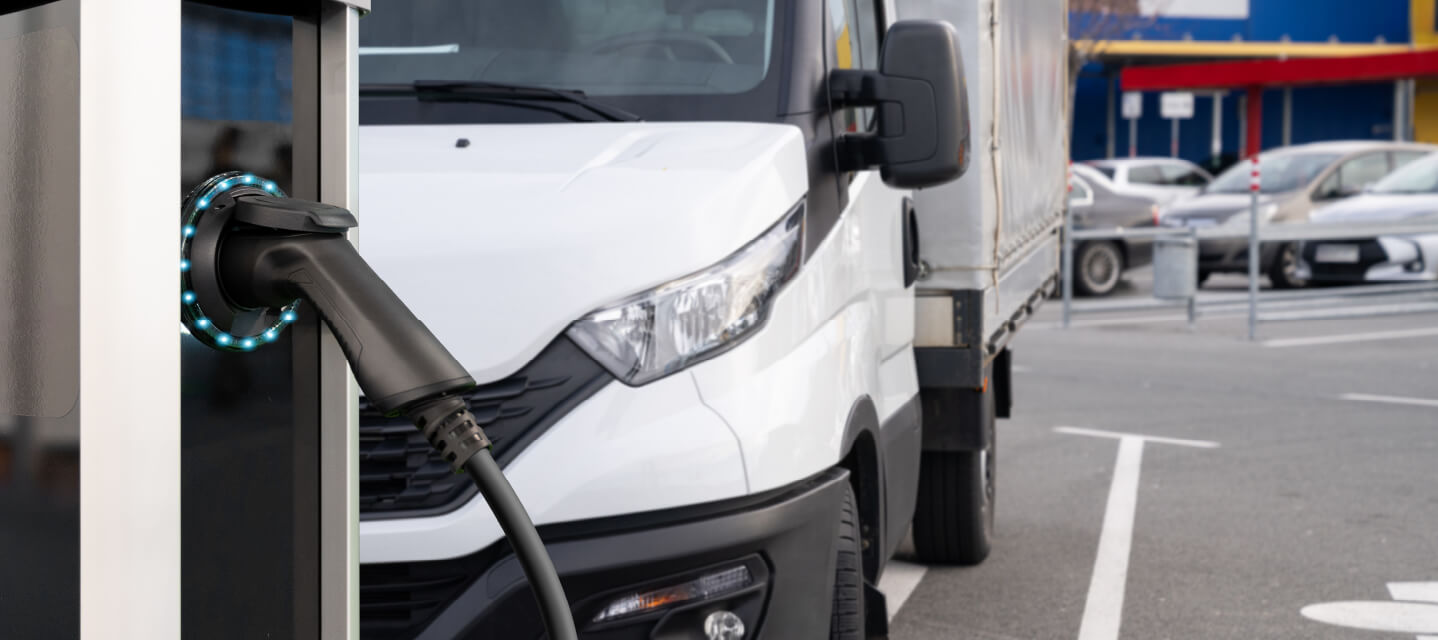Introduction
Monitoring the performance of the vehicles in your fleet is essential for maximizing efficiency and profitability. And most of fleet managers using sustainability data to reduce operating costs, incorporating green energy is crucial. But what is an EV fleet?
An EV fleet is composed of electric vehicles owned or leased by a business, including battery electric (BEVs) and plug-in hybrid electric (PHEVs). Let’s break down the benefits of electrification and what to consider before switching to electric vehicles.

What is EV fleet management?
Electric vehicle fleet management involves overseeing EV operations, including the acquisition of electric vehicles, the management of charging infrastructure and the implementation of maintenance and repair needs. This includes optimizing charging schedules, tracking vehicle performance and ensuring driver training to maximize the benefits of electric vehicle technology.
The duties of an EV fleet manager include:
- Data analysis: Utilizing data to optimize charging times, vehicle utilization and energy consumption.
- Driver education: Providing training on EV technology, charging procedures and range management.
- Financial management: Budgeting for vehicle acquisition, charging infrastructure and maintenance costs.
- Sustainability goals: Aligning Electric Vehicle fleet management with broader corporate sustainability objectives.
What are the benefits of an EV fleet?
Switching to electric vehicles benefits everyone, including fleets. Not only are there rebates and tax incentives for electrifying fleets, but switching to EVs also provides gas and maintenance savings to lower costs and simplify fleet management. Whether EVs are right for your fleet will depend on the benefits you’re looking for and how committed you are to building a sustainable fleet.
- Environmental impact: EV fleets produce zero tailpipe emissions, contributing significantly to reducing air pollution and greenhouse gas emissions.
- Cost savings: While the initial investment in EVs might be higher, long-term operating costs are often lower due to reduced fuel and maintenance expenses.
- Government incentives: Many governments offer incentives and tax breaks to encourage the adoption of electric vehicles.
- Improved brand image: Companies with EV fleets are often perceived as environmentally conscious and innovative.
- Simplifies maintenance: Speaking of maintenance, because EVs require less fluid and oil upkeep, electrification can actually help streamline your fleet maintenance initiatives. Electric vehicles eliminate the need for oil changes, transmission fluid, fuel filters, coolant and spark plug replacements due to their electric power source.
Tips for Electric Vehicle Fleet Management
Transitioning to an EV fleet involves more than simply swapping out internal combustion engine vehicles for electric ones. Effective management requires careful planning and consideration of several factors:
- Charging infrastructure: A robust charging infrastructure is essential for EV fleets. This includes installing charging stations at the fleet’s depot and identifying public charging networks along frequently traveled routes.
- Vehicle selection: Choosing the right EV for your fleet depends on factors such as range requirements, payload capacity, and the specific tasks the vehicles will perform.
- Route optimization: Optimizing routes can help maximize the efficiency of your EV fleet. This includes considering factors such as charging locations and the range of the vehicles.
- Driver training: Drivers need to be trained on how to operate and maintain electric vehicles. This includes understanding the vehicle’s features, charging procedures, and energy-efficient driving techniques.
- Data analytics: Utilizing telematics and data analytics can provide valuable insights into fleet performance. This data can be used to optimize routes, schedule maintenance, and identify opportunities for cost savings.
- Maintenance planning: While EVs have fewer moving parts than traditional vehicles, they still require regular maintenance. A well-planned maintenance schedule can help prevent unexpected breakdowns.
- Utility partnerships: Partnering with utility companies can provide access to time-of-use rates and other energy management programs, which can help reduce charging costs.
- Government incentives: Research and take advantage of any government incentives or grants available for EV fleet adoption.
Challenges and Considerations
While the benefits of EV fleets are substantial, there are also some challenges to overcome. These include:
Initial investment: The upfront cost of purchasing EVs can be higher than traditional vehicles.
Range anxiety: Despite improvements in battery technology, range anxiety remains a concern for some fleet operators.
Charging infrastructure: The availability of charging infrastructure, especially in rural areas, can be limited.
Grid capacity: A large-scale adoption of EVs could put a strain on the electric grid.
Conclusion
The transition to electric vehicle fleets is a significant step towards a more sustainable future. By carefully considering factors such as charging infrastructure, vehicle selection, and driver training, organizations can successfully implement EV fleets and reap the associated benefits. As battery technology continues to improve and charging infrastructure expands, we can expect to see even greater adoption of EVs in the coming years.
WHY JIMIIOT
Jimi IoT is a global leader in innovative IoT solutions. We provide cutting-edge hardware and software tailored to enhance efficiency and connectivity. Our range of products includes advanced GPS tracking devices, asset management solutions, smart vehicle dashcams, and telematics platforms. With a focus on technological excellence and customer satisfaction, we empower businesses to optimize operations and gain valuable insights from data-driven analytics. Trust JimiIoT to drive positive change and unlock growth opportunities in the digital age.
If you would like more details, please visit Facebook, LinkedIn, INS, and Twitter pages, or contact us directly for further information.
 EN
EN ES
ES PT
PT TH
TH VN
VN JP
JP


